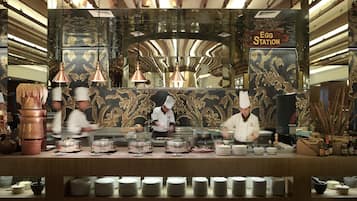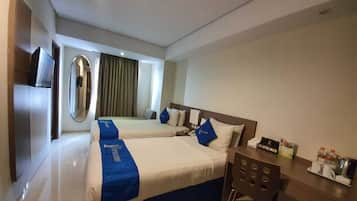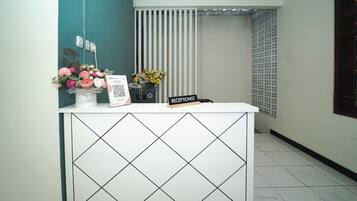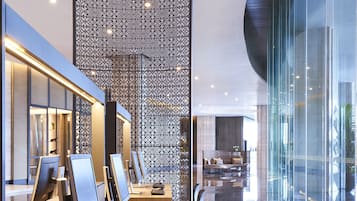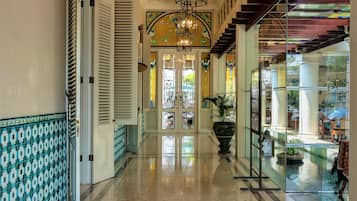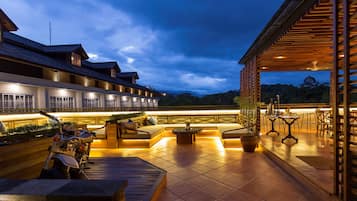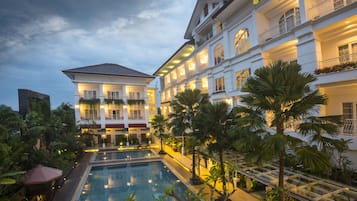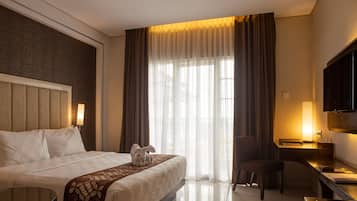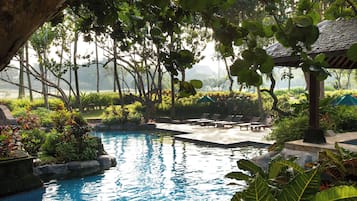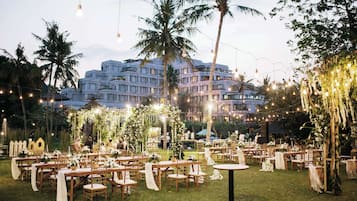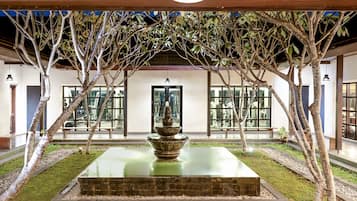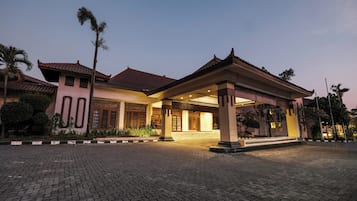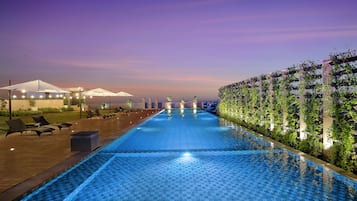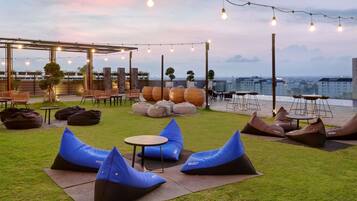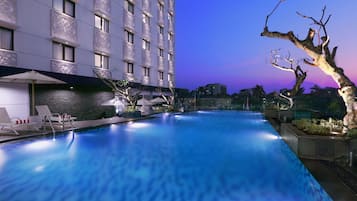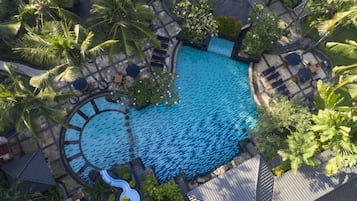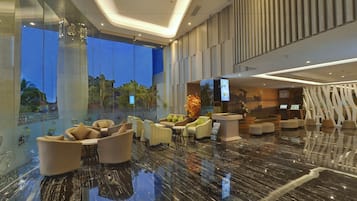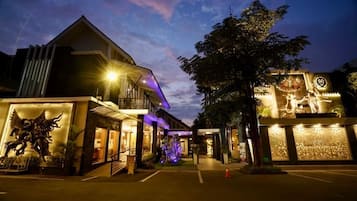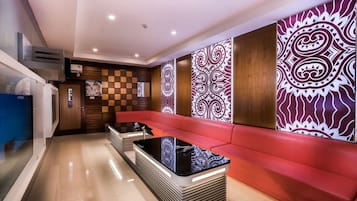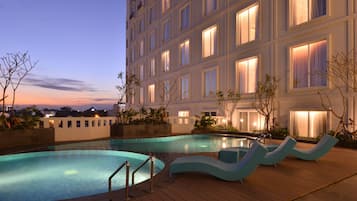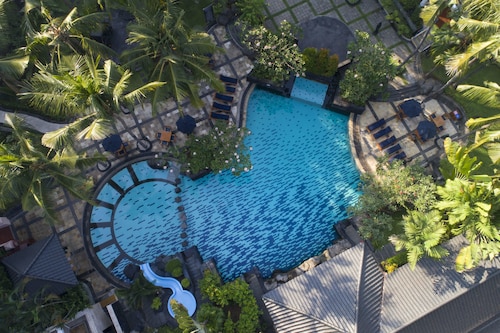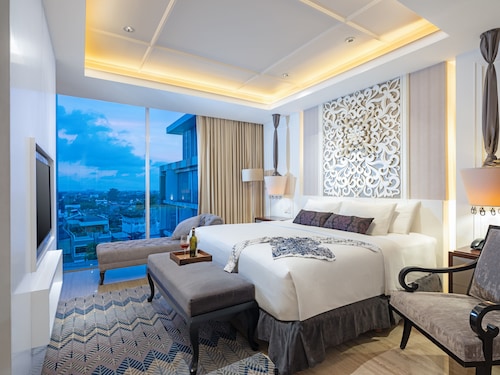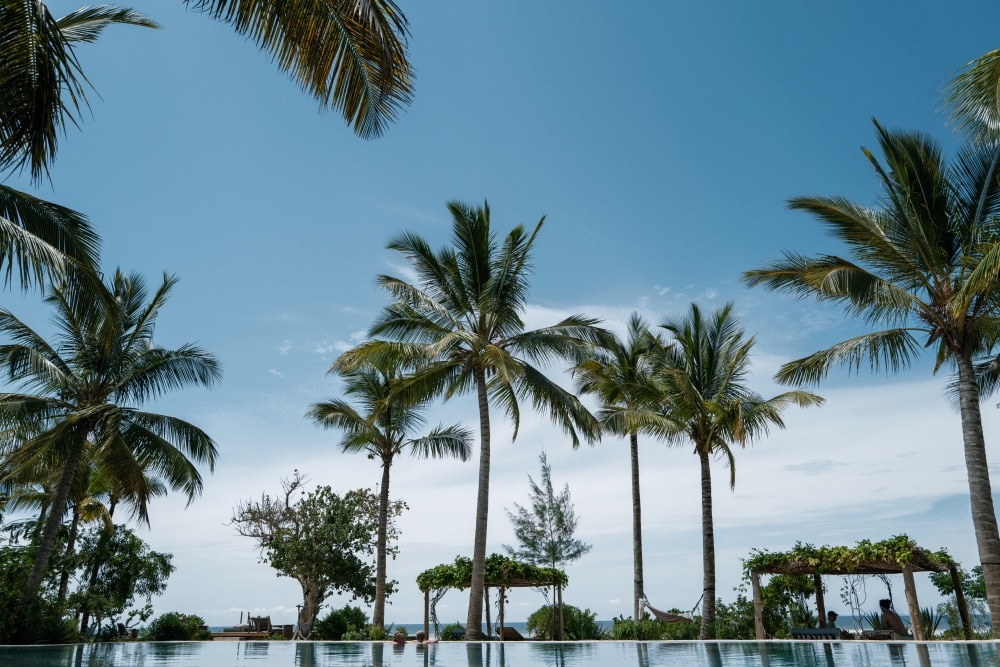Foto von Sharrie Shaw
Hotels in Tegalrejo ab 9 €
- Und wenn du deine Meinung änderst?Ganz einfach: Buche Hotels mit kostenloser Stornierung.
- Sei ruhig wählerischStöbere in fast einer Million Unterkünften auf der ganzen Welt.
Probiere es mit einer anderen Unterkunft als sonst in Tegalrejo
Apartment
Überprüfe die Preise für diese Daten
Heute
Morgen
Dieses Wochenende
Nächstes Wochenende
Beliebte Hotels in Tegalrejo

Hotel Tentrem Yogyakarta
Yogyakarta
9.2 von 10, Wunderbar, (315)
Der Preis beträgt 109 €
inkl. Steuern & Gebühren
25. Nov.–26. Nov.

Uniq Hotel Yogyakarta
Zentrum von Yogyakarta
8.0 von 10, Sehr gut, (2)

Top Malioboro Hotel
Zentrum von Yogyakarta
6.2 von 10, (17)
Der Preis beträgt 19 €
inkl. Steuern & Gebühren
27. Nov.–28. Nov.

House Of Cokro at Malioboro
Zentrum von Yogyakarta
Der Preis beträgt 15 €
inkl. Steuern & Gebühren
7. Dez.–8. Dez.
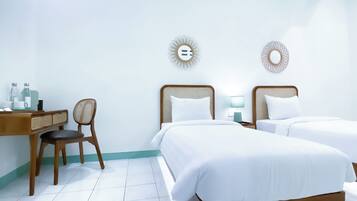
The Utara Hotel Tugu by Eresha Hospitality
Zentrum von Yogyakarta
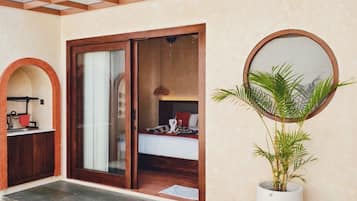
Allure Villa Yogyakarta
Yogyakarta
Der Preis beträgt 58 €
inkl. Steuern & Gebühren
16. Nov.–17. Nov.
Dies ist der niedrigste Preis pro Nacht, der in den letzten 24 Stunden für einen Aufenthalt mit 1 Übernachtung von 2 Erwachsenen gefunden wurde. Preise und Verfügbarkeiten können sich ändern. Es können zusätzliche Bedingungen gelten.
Spare durchschnittlich 15% bei Tausenden Hotels, wenn du angemeldet bist
Übernachte in der Nähe beliebter Attraktionen in Tegalrejo
Erfahre mehr über Tegalrejo
Entdecke das vornehme Reiseziel Tegalrejo: mit Wellness, Kultur, Bars und mehr!
![Batik (Javanese pronunciation: [ˈbateʔ]; Indonesian: [ˈbatɪk]) is a technique of wax-resist dyeing applied to whole cloth, or cloth made using this technique. Batik is made either by drawing dots and lines of the resist with a spouted tool called a canting (IPA: [ʈ͡ʂantiŋ], also spelled tjanting), or by printing the resist with a copper stamp called a cap (IPA: [ʈ͡ʂap], also spelled tjap). The applied wax resists dyes and therefore allows the artisan to color selectively by soaking the cloth in one color, removing the wax with boiling water, and repeating if multiple colors are desired.
A tradition of making batik is found in various countries, including Nigeria, China, India, Malaysia, Philippines and Sri Lanka; the batik of Indonesia, however, is the most well-known. Indonesian batik made in the island of Java has a long history of acculturation, with diverse patterns influenced by a variety of cultures, and is the most developed in terms of pattern, technique, and the quality of workmanship. On October 2009, UNESCO designated Indonesian batik as a Masterpiece of Oral and Intangible Heritage of Humanity.
Source: Wikipedia
These batik clothes are sold at one of the high end hotel's gift shop in Yogyakarta. They are hand drawn and painted and hence command a high price! It ranges over US$200 although some cheap batik at the market can be found for a mere US$2. The difference lies in the quality, the design and also the amount of skill that's needed to make them.
Common batik wear are made from cotton. The ones shown here are silk and limited in quantity produced.
Yogyakarta and Surakata (Solo) are two cities where batik originated in Indonesia.
#unesco](https://images.trvl-media.com/place/1718/09cd56ac-2be9-4518-ac77-e217d037b46b.jpg?impolicy=fcrop&w=300&h=400&p=1&q=high)
Foto von Sharrie Shaw
Öffentliches Foto von Sharrie Shaw
Tegalrejo: Top-Hotelbewertungen
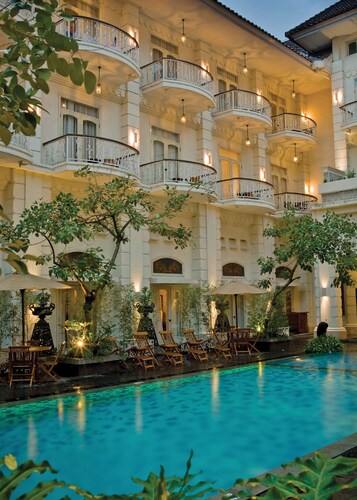
The Phoenix Hotel Yogyakarta - Handwritten Collection
8/10 Gut
Günstige Unterkünfte in Tegalrejo

OYO Life 3301 Pondok Eyang Obi
No. 11, Jl. Pelda Sugiono, Sleman, No. 11, Jl. Pelda Sugiono, Sleman, Sleman, Yogyakarta
Der Preis beträgt 9 € pro Nacht vom 6. Dez. bis zum 7. Dez.
9 €
6. Dez.–7. Dez.
inkl. Steuern & Gebühren
Häufig gestellte Fragen
Entdecke mit Expedia eine Welt voller Reisen
Unterkünfte in Tegalrejo & Umgebung
Tegalrejo: Andere Hotels in der Nähe
- Hotels in Yogyakarta
- Hotels in Depok
- Hotels in Borobudur
- Hotels in Ngaglik
- Hotels in Java
- Hotels in Ngupasan
- Hotels in Prambanan
- Hotels in Sleman
- Hotels in Pakem
- Hotels in Wonosari
- Hotels in Südostasien
- Hotels in Sewon
- Hotels in Pogung Lor
- Hotels in Temon
- Hotels in Kasihan
- Hotels in Banguntapan
- Hotels in Klaten
- Hotels in Bangunjiwo
- Hotels in Mertoyudan
- Hotels in Catur Tunggal
Top-Hotels in Tegalrejo
- Platinum Adisucipto Hotel & Conference
- Swiss-Belboutique Yogyakarta
- ARTOTEL Suites Bianti Yogyakarta
- Plataran Heritage Borobudur Hotel
- Hotel Neo Malioboro by ASTON
- The Atrium Hotel and Resort Yogyakarta
- The Manohara Hotel Yogyakarta
- Gallery Prawirotaman Hotel
- PORTA by Ambarrukmo
- Villa Borobudur Resort
Mehr Möglichkeiten zum Buchen
Neueste Trends bei Expedia
Hotels
Flüge
Reisepakete
![Batik (Javanese pronunciation: [ˈbateʔ]; Indonesian: [ˈbatɪk]) is a technique of wax-resist dyeing applied to whole cloth, or cloth made using this technique. Batik is made either by drawing dots and lines of the resist with a spouted tool called a canting (IPA: [ʈ͡ʂantiŋ], also spelled tjanting), or by printing the resist with a copper stamp called a cap (IPA: [ʈ͡ʂap], also spelled tjap). The applied wax resists dyes and therefore allows the artisan to color selectively by soaking the cloth in one color, removing the wax with boiling water, and repeating if multiple colors are desired.
A tradition of making batik is found in various countries, including Nigeria, China, India, Malaysia, Philippines and Sri Lanka; the batik of Indonesia, however, is the most well-known. Indonesian batik made in the island of Java has a long history of acculturation, with diverse patterns influenced by a variety of cultures, and is the most developed in terms of pattern, technique, and the quality of workmanship. On October 2009, UNESCO designated Indonesian batik as a Masterpiece of Oral and Intangible Heritage of Humanity.
Source: Wikipedia
These batik clothes are sold at one of the high end hotel's gift shop in Yogyakarta. They are hand drawn and painted and hence command a high price! It ranges over US$200 although some cheap batik at the market can be found for a mere US$2. The difference lies in the quality, the design and also the amount of skill that's needed to make them.
Common batik wear are made from cotton. The ones shown here are silk and limited in quantity produced.
Yogyakarta and Surakata (Solo) are two cities where batik originated in Indonesia.
#unesco](https://images.trvl-media.com/place/1718/09cd56ac-2be9-4518-ac77-e217d037b46b.jpg?impolicy=fcrop&w=1200&h=500&q=medium)


